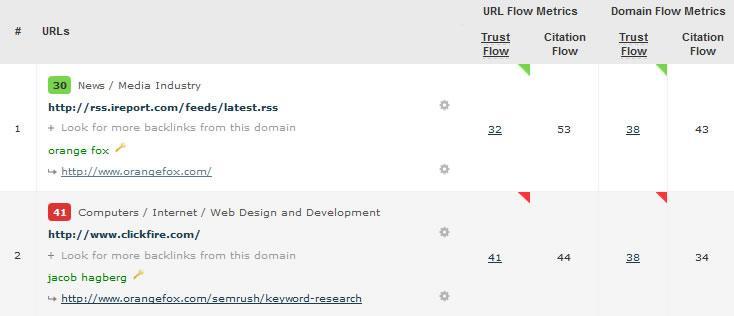Topics:
Never Miss a Beat - Get Updates Direct to Your Inbox
FILTER:


Increase The Value Of Your Online Business With On-Site SEO Tweaks
By Quiet Light
SEO is both a powerful accelerator of profits and a destroyer of investments. Ignore a website’s SEO at your peril.
I’ve heard incredible stories over the years from buyers, about simple SEO tweaks that led up to 300% profit. But I’ve also heard stories from buyers who lost their investment because of poor SEO research. So, as a buyer, if you ignore a website’s SEO, you are taking a huge risk.
I’ve wanted to write about SEO analysis as part of your buying strategy for some time, but to be frank, I lack the knowledge to write that article.


Jacob is also a highly sought-after speaker and has specific skills related to evaluating websites for sale and identifying ‘low-hanging fruit’ that buyers love to find.
In a short written interview with Jacob, we cover:
- On-site SEO and how a few simple tweaks can turn into 20% – 100% gains in traffic
- How to identify a negative SEO campaign
- The difference between a natural backlink profile and an unnatural backlink profile
- What 3 Google analytics reports a buyer should pay attention to
Your firm provides an on-site SEO analysis. Why do you think this is important?
Our process looks for quick-win opportunities and critical mistakes that could be damaging your website’s search engine traffic. Unlike most agencies, we don’t focus on running your website through automated checkers and delivering you a 1,000+ page report that you can’t do anything with. Instead, we typically identify and prioritize 15-20 issues and give you a clear plan to take action. This goes far beyond telling you to write meta descriptions and to add alt image descriptions.
If you were to guess, what percentage of active websites have significant on-site SEO issues with their website?
We would estimate that 50% of websites have significant on-site SEO issues, meaning that they are missing out on 20-100% increases in organic traffic or have algorithmically penalized. This would not show as a manual action in Google Search Console.
When someone is buying a website, there is often a heavy focus on making sure the backlink profile is pure.
Inspecting the link profile is one of the first things you can do even before having access. Here are a few pro tips that you won’t find on other websites. There are many tools available to check the backlink profile. They include Majestic, Ahrefs and Moz Open Site Explorer. (Jacob is a brand ambassador for Majestic and his opinions do not reflect the official opinions of Majestic). I would use these tools to investigate if the backlinks are legitimate and if they are likely to stay live.


For example, the chances of high SEO value homepage links or RSS feed links remaining permanently live is unlikely.
Website buyers should also get access to Google Search Console (formerly Webmaster Tools) to confirm that the website does not have a manual action, to review the links to the site Google has found and to view search analytics for the last 3 months.
Links in search console need to be cross-referenced against a third-party tool. A red flag is seeing a high number of unnatural links in Search Console vs. what third-party tools show. Malicious sellers may have built unnatural backlinks and intentionally blocked third-party tools through a method called cloaking.
A great resource is Link Research Tools. Their founder Chris Cemper says, “Doing proper due diligence to audit the backlink profile before buying a website or domain has been best practice for years. Otherwise you simply run too high of a risk purchasing a website with a toxic backlink profile that might cost you all of your organic rankings only a few days after the sale.”
The search analytics data should match Google Analytics page view data. Caution, it is extremely easy for a seller to inflate Google Analytics page views without using the common method of buying fake visitors or bot traffic.
Should a webmaster be concerned about negative SEO from competitors?
Yes! Negative SEO doesn’t mean going to Fiverr and blasting thousands of links at your competitor’s website. Although this can be annoying to deal with, these links can be disavowed in Google Search Console so they don’t harm your website.
If a website has a link profile that appears unnatural in a third-party tool, be sure to ask to see the current disavow file. Some of the best SEOs intentionally “negative SEO” their own websites and disavow links to make it difficult for competitors to reverse engineer their offpage strategy.
Today, negative SEO really means going after a brand’s reputation. Be sure to Google the brand name to make sure there are no negative reviews. Most business owners underestimate how much one or two negative reviews can impact sales.
Imagine you just bought a dating website with 100,000 members. Then when you searched “your new website name + login” there was an article telling your members to try another service.


In this example, the video tells all of its members to join a competitor website.
How concerned should they be about the on-site SEO?
The next thing we would investigate is the on-page SEO and the quality of the content. No one wants to buy a website and have traffic drop. Too much low quality content can trigger an algorithmic penalty, which is harder to detect because it does not trigger a manual action in Google Search Console.
Another common issue that we see with ecommerce websites is low-quality product pages. Ecommerce site owners seem to think that if they create a product page that has the manufacturer’s image and description that they are entitled to free traffic from the search engines. This couldn’t be further from the truth, these are pages Google actually rates as lowest content quality. There will always be exceptions to the rules like big ecommerce clothing retailers.
If a product really is important to your website, it should have unique images that are properly tagged and more detailed descriptions that adds value beyond just what the manufacture provides.
You might be thinking, this sounds like a lot of work. It is a lot of work to create a product tutorial video, take awesome pictures, create a FAQ and collect customer reviews. These are the extra things you need to be doing to win in search and conversion.
In your opinion, what would be the top SEO opportunities a buyer might look for to quickly grow an acquisition? For example, could there be a significant growth benefit by simply optimizing product titles or descriptions to be more keyword focused?
A buyer should be looking for a website that is performing because it is a solid business that has brand search, but has significant technical SEO issues. This is where we can help most. When these issues are corrected, a 20% jump in organic traffic can increase your newly acquired asset’s value by multiples. This includes fixing basic things like title tags and making the website mobile-friendly. Most webmasters don’t realize how much traffic actually comes from mobile!


What dangers should buyers be concerned about when buying a website in regards to on-site SEO.
The biggest red flag is a website filled with thin or low quality content. An example would be a blog with generic 500 word articles. This content is pretty much junk because it will have low visitor engagement which sends negative signals to the search engines. Things to measure include time on page and bounce rate.
A good rule of thumb for content is: If tomorrow your content was gone, would anyone miss it?
If you were advising a buyer on the acquisition of an e-commerce website, what would be the first three things you would inspect from an SEO standpoint?
In your opinion, what are a few reports in Google Analytics that buyers should always pay close attention to?
The 3 reports I would focus on are:
- Organic traffic trends while taking into consideration seasonality and branded search vs. non-branded keywords.
- Ecommerce sales funnel to identify if there are any conversion bottlenecks in the checkout process and what traffic sources are driving revenue.
- Mobile vs. Desktop behavior to identify performing and non-performing site content.
These reports will give you a high-level insight to what is actually going on with the website and where there are opportunities for improvement.
Comments are closed.






Please keep writing these informative articles. I appreciate them.
You write that ‘it is extremely easy for a seller to inflate Google Analytics page views without using the common method of buying fake visitors or bot traffic’…. How?
You mention Majestic, Ahrefs and Moz… Do you have a preference?
Hi Tom,
You can fake traffic simply by telling another product like Google Tag Manager to fire a Google Analytics pageview twice each time someone visits the website. Most normal sites would never configure Tag Manager to do this, but sneaky people might.
As a brand ambassador for Majestic, we definitely use their tool as a starting point. We also use Moz and Ahrefs to gather more data if required.
What are Majestics strengths & weakness’s?
Thanks Tom